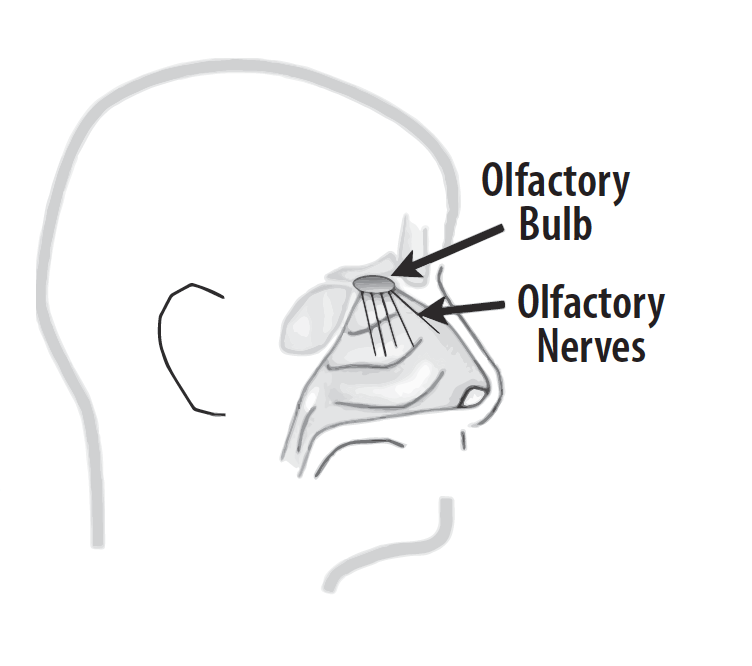Both of these senses are directly related to the health of the nose.
Smell (Olfactory system)
What would life be like without the ability to smell? The term anosmia means lack of or decreased sense of smell.
The olfactory nerve cells with their special ends, called olfactory receptors, are located at the upper area of each nasal cavity. This is why we sniff to increase the ability to smell subtleties. The average nasal cavity contains more than 100 million olfactory neurons. In newborns, the nerve endings are a compacted sheet, but in children and adults, these tissues become less dense and interwoven. As humans age, the number of olfactory neurons steadily decreases.
The sense of smell is initiated by airborne chemicals that enter the nasal cavity in circular currents of air movement. These chemicals stimulate our olfactory nerves. The response to an odor is directly related to the sniff’s duration, volume and velocity. The ability to smell can be compromised if the olfactory receptors are covered in mucoid debris.

Taste (Gustatory system)
Ageusia refers to a lack of or reduced ability to taste sweet, sour, bitter or salty substances. Taste buds are tiny projections embedded in the tongue; a single taste bud can respond to multiple types of tastes.
Taste buds cover the tongue but are also located on the so palate, epiglottis, larynx, and pharynx. There are eight to ten thousand taste buds in the human mouth.
Certain tastes are appreciated by anatomical locations. For example, sweetness is most readily detected at the tip of the tongue, whereas salty taste is detected at the front and sides of the tongue. Sour tastes are along the sides and bitter sensations are appreciated at the back of the tongue.
In humans and many other vertebrates, the sense of taste works with the sense of smell in the brain’s perception of flavor. The gustatory system is intertwined with the olfactory system – that is to say, smell and taste are very closely related. Anyone who cannot smell appreciates the fact that his or her food tastes differently or does not have any flavor at all.
